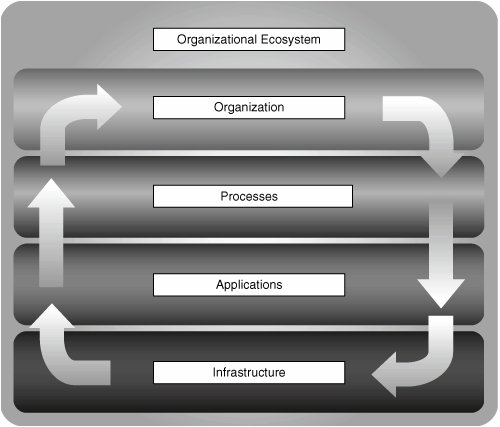Aligning Technology Solutions with Business Considerations
| Even though wireless networks form a very specific subset of information technology assets, several high-level considerations are required before making the decision to pursue a concrete design and implementation of a WLAN in your ecosystem. These considerations encompass both business and technology considerations, and they are not necessarily unique to WLANs. Indeed, whenever an investment opportunity or requirement is present, similar deliberations must be made. Examples include what the rationale for the investment is, what the scope is, how much capital outlay will be required, what the timing of these outlays is, what kinds of returns should be expected, and so on. The same considerations can be made whether you are making an investment in information technology, manufacturing equipment, real estate, or bonds. There are, however, subtle differences when it comes to information technology infrastructure investments for two reasons:
First, after IT infrastructure investments are made, they should be considered sunk costs, which cannot be recovered. This is because the average shelf life of today's IT assets is relatively short, even though the asset might be usable for a relatively long time. The key point to consider is the economic value, not the life span of usability of the asset. Many IT products have economic life spans of one to three years, after which they have no residual economic value. The lack of residual value does not, however, imply that the asset can no longer be used. Consider a similar example of a car. The fair market value of an automobile that is 7 to 10 years old is almost non-existent. Nonetheless, assuming that the vehicle remains in good operating condition, the car can continue to be driven until it physically breaks down. As such, the cost of the car is sunk after it has reached a certain age, but this does not mean that it is no longer usable. Now consider a real-estate investment such as a building or land. These costs are not considered sunk because the initial cost can be recovered many years after the purchase has occurred. The residual value of these assets remains relatively constantin fact, we often hope that these assets appreciate. A second difference relating to investments in IT infrastructure is that by design, infrastructure forms the foundation upon which many higher-order solutions rest, including applications such as Customer Relationship Management (CRM), Enterprise Resource Planning (ERP), and e-mail applications. The applications support business processes that in turn help an organization to achieve its primary goals. IT infrastructure thus not only becomes a core business enabler, but is often considered a core business necessity in today's information-driven world. The organizational ecosystem can thus be deconstructed into several independent, tightly coupled layers, as shown in Figure 2-1. At the very bottom, the infrastructure assets enable data transformation, storage, and transport. These infrastructure assets are used by applications such as e-mail, web services, CRM, ERP, and many others that give the information meaning. Figure 2-1. The Organizational Ecosystem In their turn, the applications support various transactional, analytical, and collaborative processes. Transactional processes ensure that one activity in a sequence is committed before proceeding to the next one. Analytical processes create, mine, and destroy data. Collaborative processes make it possible to share information. Note that it is the collaborative process that actually creates real value because information in isolation has none. What is the value of a book that nobody reads? What is the value of an idea if nobody is aware of it? At the very top, the organization has its specialized, dedicated teams that use the various processes to help the organization achieve its goals. Examples of corporate goals are increasing shareholder value, serving customers, providing employees with a superior working environment, and helping the community. The flow of information in the institutional ecosystem creates a dynamic, fluid environment through which information flows with varying velocities. The ultimate purpose of acquiring, interpreting, and manipulating this information is to enable the institution to act upon it and adjust to changing conditions in the pursuit of its goals. For this to happen in a timely and relevant fashion, several criteria need to be fulfilled:
Today, WLANs form an integral part of the IT infrastructure portfolio. However, it is not always clear whether this transport asset is relevant for any given organization. Indeed, when considering WLANs, you need to answer four basic questions:
The remainder of this chapter covers the business-technology alignment challenge and arms you with the necessary tools to tackle and answer the first two questions. The following chapters cover the third and fourth questions. |
EAN: 2147483647
Pages: 163
